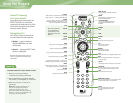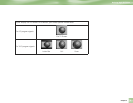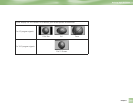
6
Resolution & Interlacing
Two elements that determine the quality of a TV picture are:
Resolution
For TV equipment and broadcasts, resolution is defined by the number of horizontal lines
displayed to make up each frame of a video image. The more lines of resolution used to
compose each frame, the more detailed and sharp the picture. Standard TV resolution uses 480
horizontal lines to make up each video frame; HDTV uses either 720 or 1080 lines to compose
each frame.
Interlaced & Progressive
If you’ve ever looked very closely at your TV, you have noticed the picture is actually made up
of many lines scanning across the screen. The set of lines that make up a complete image are
called a “frame.” Like a child’s flipbook where the image seems to move as the pages change,
your TV displays video by changing these frames at a rate 60 frames per second.
The term “interlacing” refers to whether each of those frames contains all of the lines of
image, or every other line. Interlaced signals take every other line from 2 frames, each lasting
1/60th of a second, and combine them into one frame lasting 1/30th of a second. In this way,
interlacing tricks the eye into thinking it’s seeing twice the resolution that’s actually being
displayed. In non-interlaced video, referred to as “progressive scan” video, frames are displayed
every 1/60th of a second containing all of the lines of video information.
The specifications for video resolution are usually stated by giving the number of horizontal
lines (480, 720 or 1080, as described above) followed by either the letter “i” (for interlaced) or
“p” (for progressive scan). Most standard TV broadcasts are 480i; some DVDs and non-HDTV
digital broadcasts use 480p. Specification for HDTV broadcasts and equipment requires
either 1080i or 720p. While there’s some debate as to whether it’s preferred to have more lines
interlaced or fewer lines progressively scanned, it’s generally accepted that 1080i is the highest
quality video format.
Defining High-Definition
Introduction


















